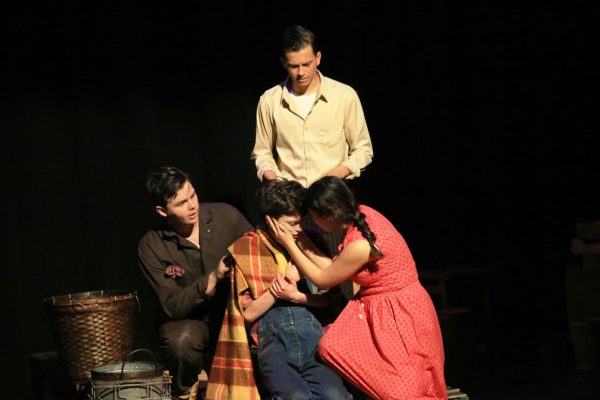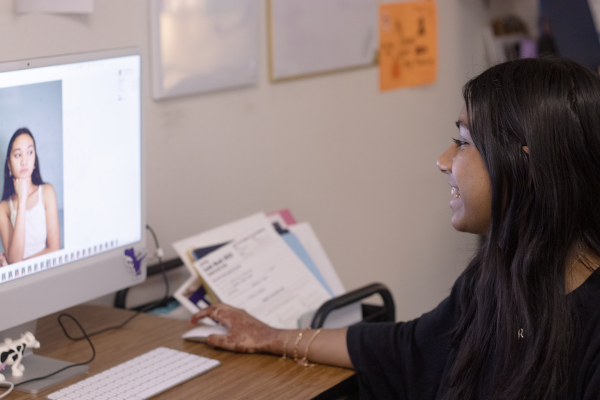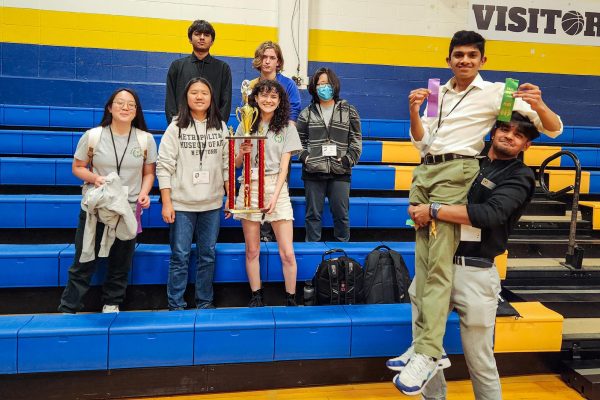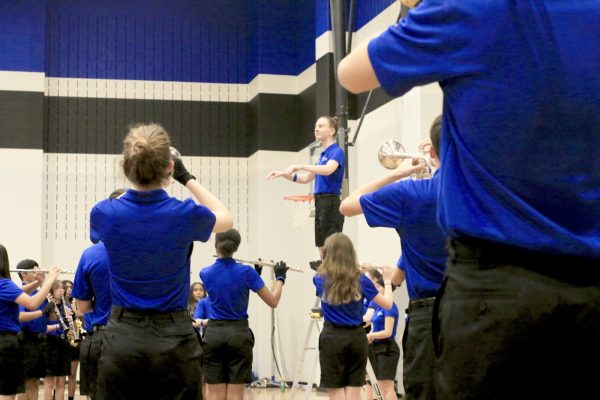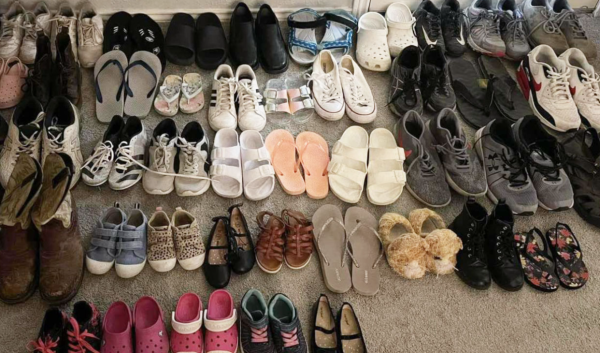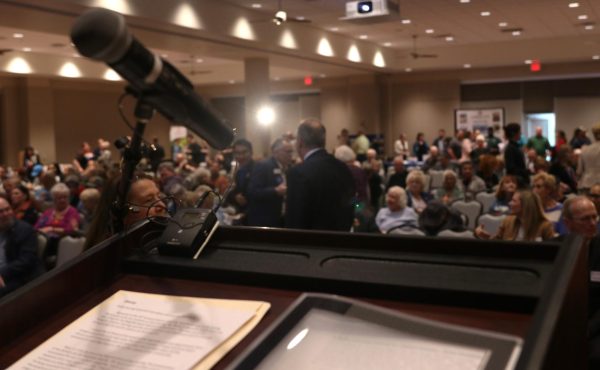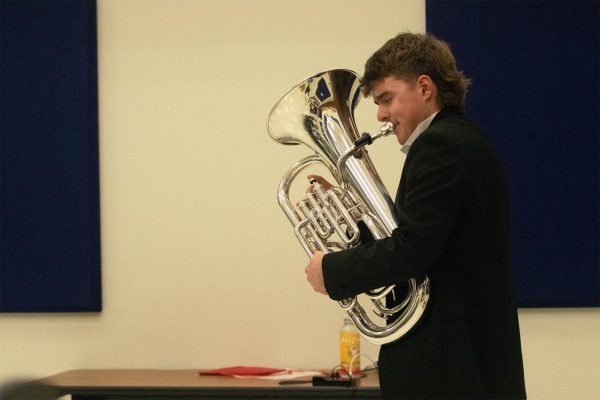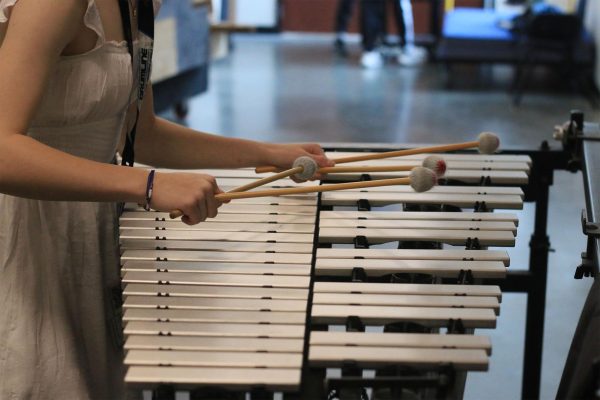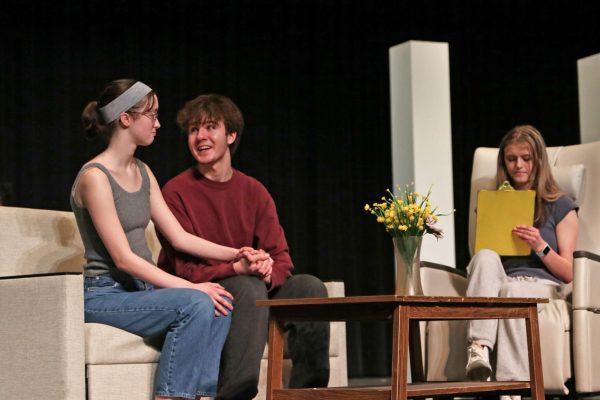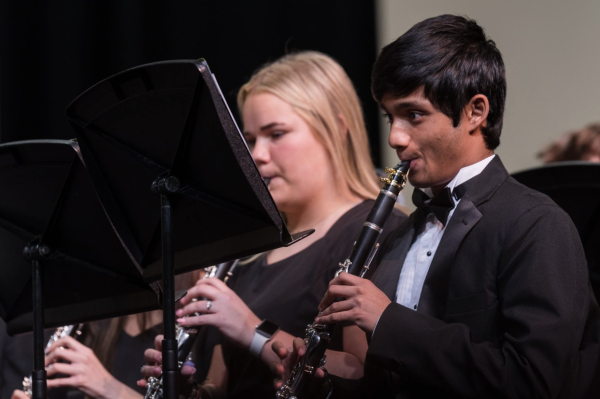Administration implements measures to decrease fights
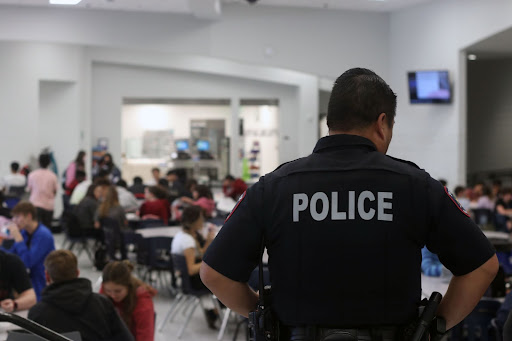
School resource officer David Lee moniters the cafeteria during lunch.
In response to the increase in the number of disciplinary incidents since the start of this school year, administration has taken additional measures to promote safety on campus.
“A few efforts [we’ve made to prevent fights] are [an] increase police and security guard presence, enforced hall passes and more teachers on [hall and bathroom] duty” principal Amy Boughton said. “Most kids [aren’t going to] engage in a fight when there is an adult present, and the orange hall passes have reduced a lot of student activity in the hallways.”
There have been 15 reported fighting incidents so far for the current school year, which is a sharp rise from four total incidents during the 2019-20 school year. Boughton said she believes virtual school prevented many students from properly transitioning into high school, and that many students aren’t able to handle issues in an effective manner.
“I believe [the behavior seen] is a result of emotional immaturity,.” Boughton said. “For example, many sophomores had half of eighth grade and freshman year taken away due to the pandemic. We are finding that emotionally, some of our students are in a mindset [from] before COVID-19.”
In addition, a large percentage of students have not been continuously in a classroom environment since the 2019-20 school year. Algebra II teacher Randi Riordan, who was injured after breaking up a fight between two students, attributed this to why there are more behavioral issues being reported.
“[Students] may have been raising themselves last year at home, possibly unsupervised,” Riordan said. “We are people of habit. When those routines and procedures are taken away, it’s difficult to [adjust] back [to what we used to have].”
The administrative staff has been keeping record of the number of disciplinary incidents and have noticed a downward trend in the number of fights in the second nine weeks of this school year. Although the numbers show that increased police and security and less hallway activity are effective in reducing fights, not everyone agrees that this is the best solution.
“Having more police is only a fear factor,” senior Alana Dryburgh said. “Sure, it’s effective in reducing fights, but it’s not the best way [for] the school should handle this situation. Maybe helping kids individually [would] be more effective.”
Boughton has been discussing ways to help younger students make better choices with their actions with the Principal’s Advisory Council, a group of students representing various organizations. She said she hopes to implement their ideas during the spring semester or next school year.
“After reviewing the discipline data with the Principal’s Advisory Council, we’ve thought about mentoring and [having] discussions with the sophomore class about [adhering to] rules,” Boughton said. “It is a great way to have a more personalized conversation with [younger students] since not everyone reads the handbook. Consequences can vary from in-school-suspension to criminal charges. [Actions from high school] could affect college acceptances and careers, so students should be aware that they are risking a lot when they decide to engage [in such activities].”
Riordan said students, regardless of grade level, are able to create a more welcoming environment by encouraging their peers to make smarter choices with their actions. She said she hopes students are able to step up and make correct decisions individually in times of chaos.
“Chaos is something that will injure you, so be a leader and consider your safety,” Riordan said. “If we have student leaders from various communities [encouraging] others to do the right thing, the [effect] will grow like wildfire.”

Senior Yunseo Jo is a reporter and this is her first year on staff. She is a dog whisperer who enjoys reading and digital art.



